Welcome to the second part of Popplet’s brave mission to boldly go where no app has gone before: to discover as much about Space, the Universe, and Everything as we can. Join us, and learn from those enlightened beings already engaging Popplet in space research; illuminating the answers to the eternal questions of the eons, opening the minds of the curious to the infinite possibilities of what lies beyond their own world.
What do we know? Not a lot in the grand scheme of things, despite that grand opening! In saying that, what humans have discovered so far about outer space is truly fascinating, utterly compelling and we just have to know more. That is why educators are including Astronomy in their curriculums – the truth really is out there! So let’s go look for it.
Space, Popplet and Infinity!
Yes, space is big! And that’s what the Year 5 pupils of Saint John’s Primary School, Walsall, England, discovered when they started mapping the known universe with the “brilliant Popplet app”:
Y5 pupils at @StJohnsCofEWW used the brilliant @poppletny app to mindmap all the fascinating facts that they had discovered about 'Space'. pic.twitter.com/gCZmolkAer
— Animate 2 Educate (@Animate2Educate) March 29, 2017
Popplet is perfect for space research because it offers explorers an almost infinite canvas for logging their findings! Pan out to infinity, pan in for a closer look. Use Popplet Linker and Popplet Comments to keep your data in order. Give awesome professional presentations using one of Popplet’s two presentation modes. The only things that might hold back your cosmic investigations are Popplet’s popularity and it’s servers, which aren’t quite infinite, not yet anyway!
The Earth
Before we continue our journey to far-off distant worlds, let’s not forget our own good planet, our home planet and what rock-star astronomer and scientist Carl Sagan famously referred to as the pale blue dot. Most of Earth’s inhabitants have by now accepted the difficult truth: that the Earth is not – and has never ever been – the center of the Universe. It’s not even the center of our solar system! We aren’t saying the Earth isn’t important – far from it. There is as much to be learned from our own world as there is from more distant ones. Behold, Facts About Earth, created by Jared:
But let’s not be too hard on ourselves and dwell on our insignificance. The Earth is still, as far as we know, the only planet known to harbor life. So the search is on, and if we are ever to find new life or life forms, then we need to know what to look for. Sarah Z points the way with this Popplet published in her highly informative school blog article:
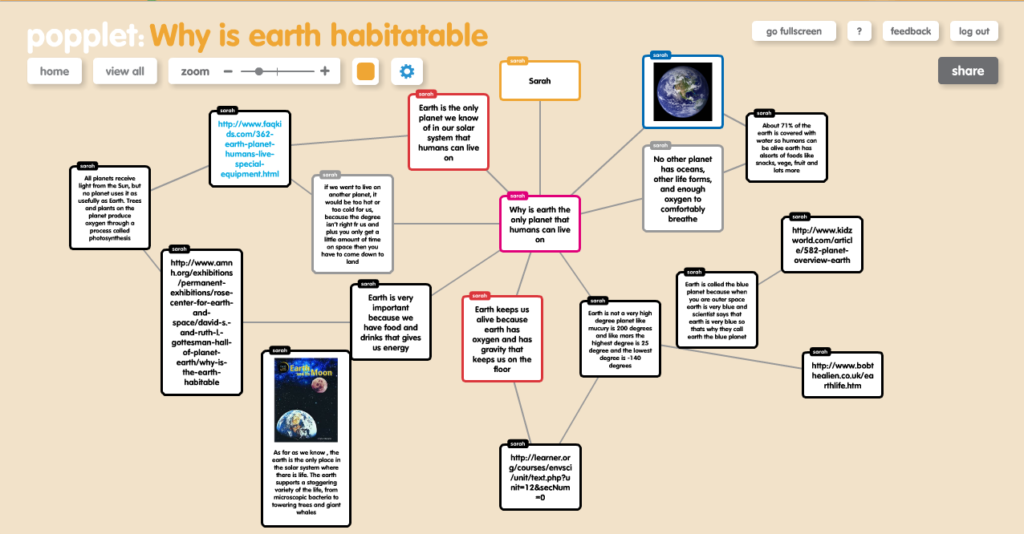
The Moon
We visited our closest celestial neighbor in our previous article, Outer Space 1: Moon Popplets – check it out. Our moon is a fascinating place and it’s been influencing our own planet, and everything that has ever existed on it, forever!
Planet Lesson Plans
As we now know, there’s a whole lot more to space than planet Earth and its moon. There’s even a whole lot more to outer space than the planets that are closest to ours. The other planets in our solar system are so close we can sometimes see them with the naked eye, so it’s only natural that people have been looking at, studying, and even worshiping them for a very long time. Saturn is one such planet. Well-known for its unmistakable rings, there’s a lot more to the Jewel of our Solar System as we discovered in this fantastic example of a planet study lesson plan from college senior Jessie Woodmancy:
“This is a lesson plan created for a fourth-grade classroom. It uses the website Popplet to create a visual “web” to connect facts of a specific planet that students were assigned to research. This lesson teaches students more about the Solar System by allowing them to create a visual organization of each planet.”

Great work, and adaptable for any grade and any planet or celestial body. Thank you, Jessie!
The Solar System
When exploring outer space, we can always widen our view, so next stop, the Earth’s Solar System: home to arguably nine planets, a big sun, more than a few moons, and quite a number of other definable natural orbiting heavenly bodies – and a not a few unnatural ones! Technology Integration Specialist, Elizabeth Andros focussed on the planets in this very impressive solar system activity. First, she created a Popplet of the planets, then added factual information voice overs in Book Creator:
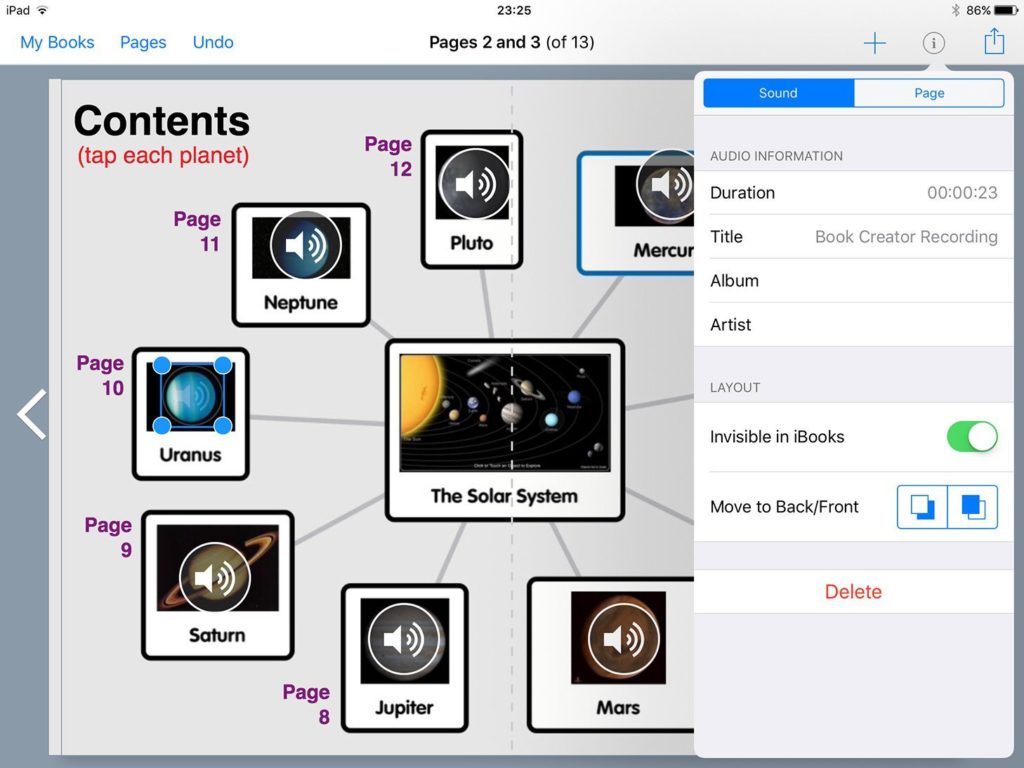
Haley Bean – not named after the most famous of comets – created a Planet Popplet with links to create this equally informative YouTube presentation about the Solar System:
Space Art: Mixed Media Solar Systems
The second graders at Chesterbrook Academy created “amazing planet projects” in art class, using Popplet to write down the facts that they learned. Marvelous work.
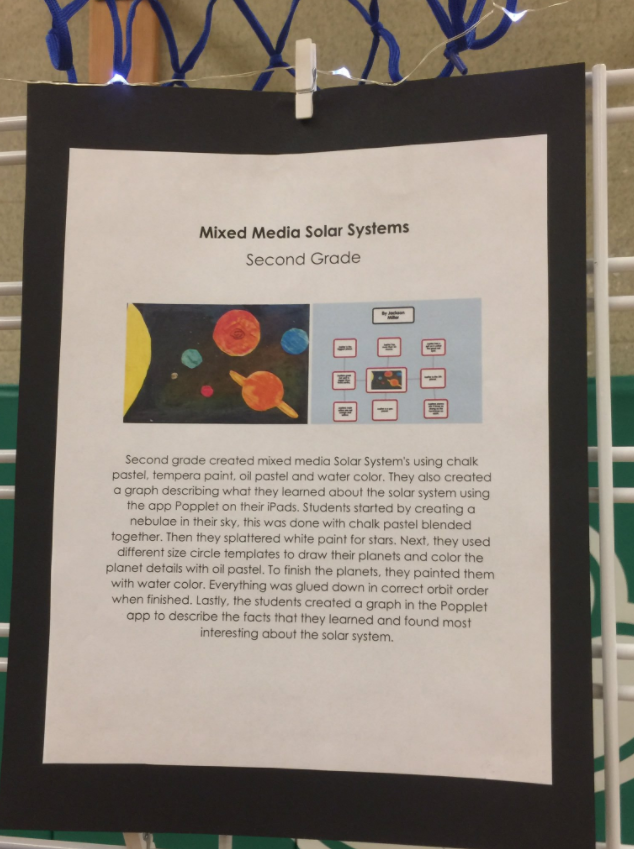
The Space Race
There definitely comes a time when looking up at something just isn’t enough, and you have to figure out a way to get closer, and maybe even get to what you’re looking at. That’s precisely what happened in the middle of the last century with the Space Race, the unquestionable highlight of which just has to be the first moonwalk. The Year 5 students from Upton Heath Primary School, Chester, England made Popplets about these historical events. Some of them even included their photos, as a signature – and why not? – all great artists should sign their work!
Year 5, boldly going… RT @UptonHeathCE: Learning to use Popplet, sharing space travel research pic.twitter.com/YbmKWS3pk7
— Popplet (@poppletapp) October 11, 2016
Space Travel
Things might have slowed down a little since the 1960’s, but going to the moon was just the beginning of Earthling space travel. The human race will continue to boldly go where no man or woman has gone before, simply because that’s what we do. Space isn’t just big however, it’s also an extremely hostile environment and there are some big challenges facing future would-be explorers, the two main ones being:
- How to survive the incredibly long journey times?
- What conditions are needed for human survival once we get there, wherever “there” might be?
Science Teacher, Kerri Mason, made a Popplet that addresses the first question in her Space Travel Popplet:
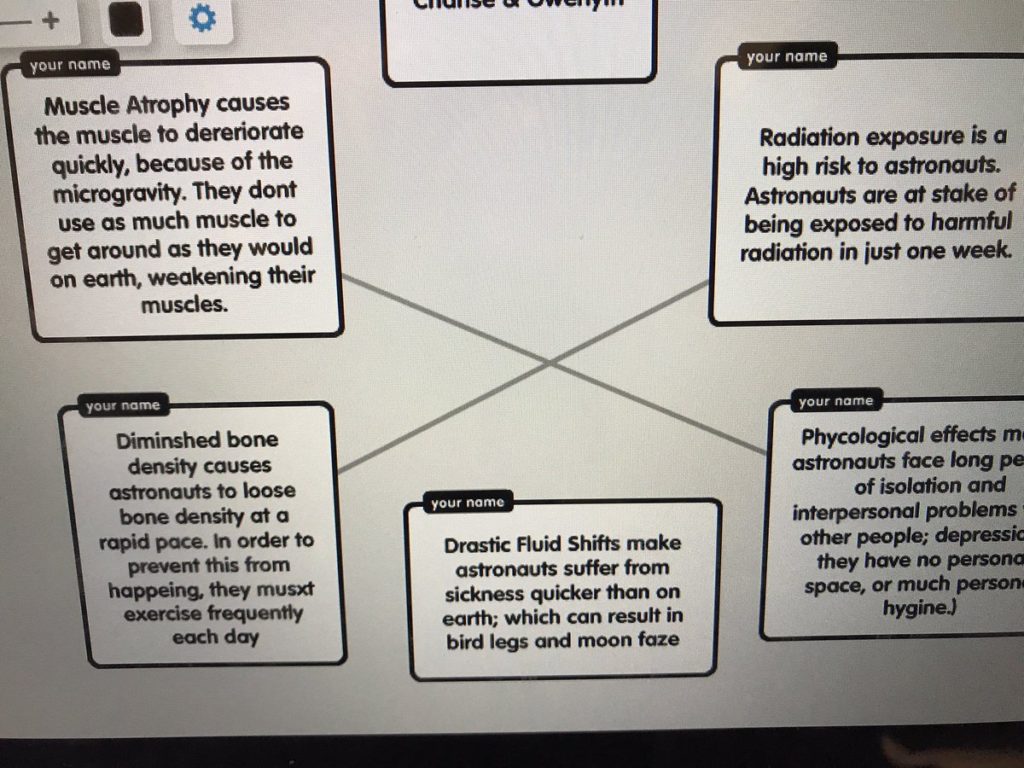
While her colleague, Hendo Ashlee, and her students are hard at work with Popplet on an answer to the second:
Level 2 graphic organizer for Space Exploration! @UlrichKISD #bulldogscreate #popplet #space #science #level2 #scaffoldinstruction pic.twitter.com/j2YbuZlg24
— Hendo@PVHS (@HendoAshlee) May 17, 2017
Beyond The Milky Way
The Milky Way is what we call our galaxy. It is also home 100 billion other planets, But there are a lot more galaxies than ours in the Universe, and they come in all shapes and sizes and can be quite different. We can see in this Galaxies Popplet, from My Library Learning.
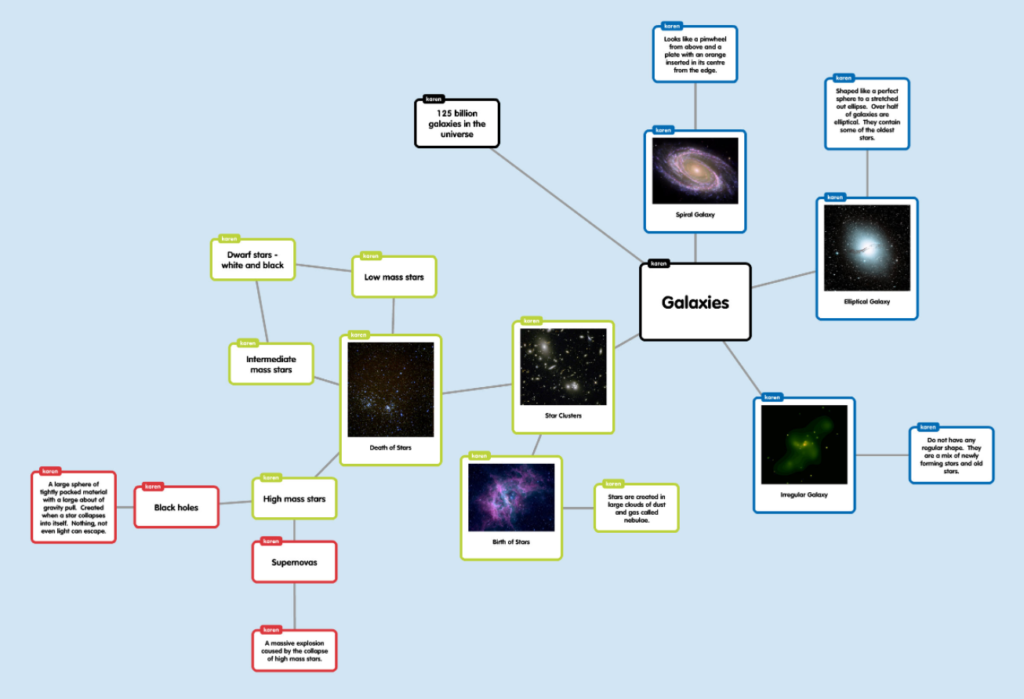
The Earth is part of a Solar System, reliant on what we call the Sun. We are but one of many solar systems in the Milky Way, which is one of 125 billion known galaxies in the Universe. And there’s more…now scientists are talking about an infinite number of universes: the Multiverse. With those mind-boggling facts, we will leave you to ponder, as we now are. The moon seems a lot closer than it did at the beginning of this article!
Are you using Popplet to map the stars and unravel the mysteries of outer space? If you are, we’d love to hear from you. Share with us, the Popplet community, on our Twitter and Facebook Page. Sign up for a free web account at the and we’ll give you ten free Popplet boards. And of course, may the force be with you, always!